Abstract
Intravenous administration of 5-hydroxytryptamine (5-HT) caused a dose-dependent contraction in the lower esophageal sphincter in the opossum. The smallest dose of 5-HT which caused a detectable contraction of the sphincter was 0.5 mug/kg, and a maximal sphincter contraction was produced by a dose of 40 mug/kg. Methysergide converted the contractile effect of 5-HT to a dose-dependent fall in the sphincter pressure; maximal inhibition of 77.2 +/- 7.2% of the resting pressure occurred with a dose of 40 mug/kg. The inhibitory effect of 5-HT was antagonized by tetrodotoxin, 5 MeO-DMT, and 5-HT tachyphylaxis. 5 MeO-DMT enhanced 5-HT-induced contraction of the sphincter. In the presence of 5 MeO-DMT and methysergide, 5-HT still caused a brief contraction of the sphincter; this contraction appeared to be due to stimulation of postganglionic cholinergic neurons as it was antagonized by tetrodotoxin or atropine. Reserpinization caused enhancement of the sphincter contraction by 5-HT. In the reserpinized animals in the presence of methysergide, 5-HT caused a small initial contraction followed by prolonged inhibition; atropine antagonized the initial contraction, while inhibition was antagonized by 5 MeO-DMT. These studies are consistent with the view that 5-HT exerts several different effects on the sphincter. 5-HT causes contraction of the sphincter by its direct action on the muscle and also by stimulation of cholinergic excitatory neurons. In addition, 5-HT inhibits the sphincter by stimulation of nonadrenergic inhibitory neurons.
Full text
PDF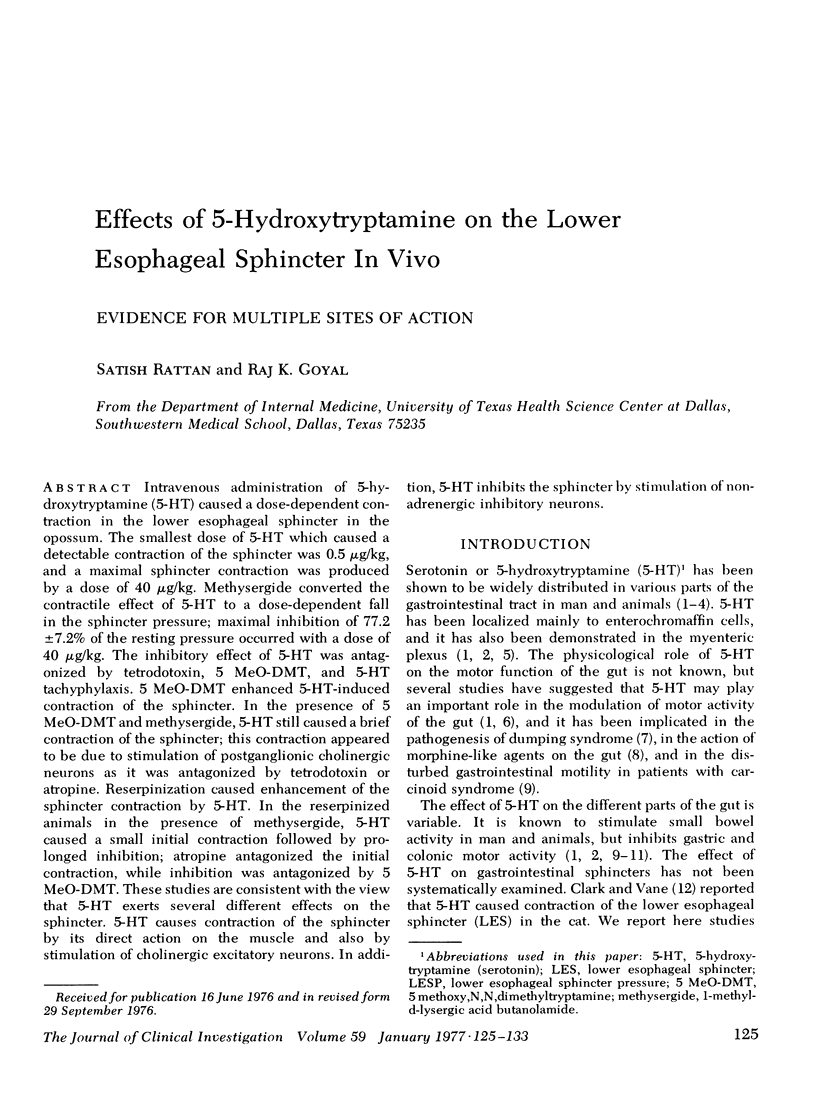
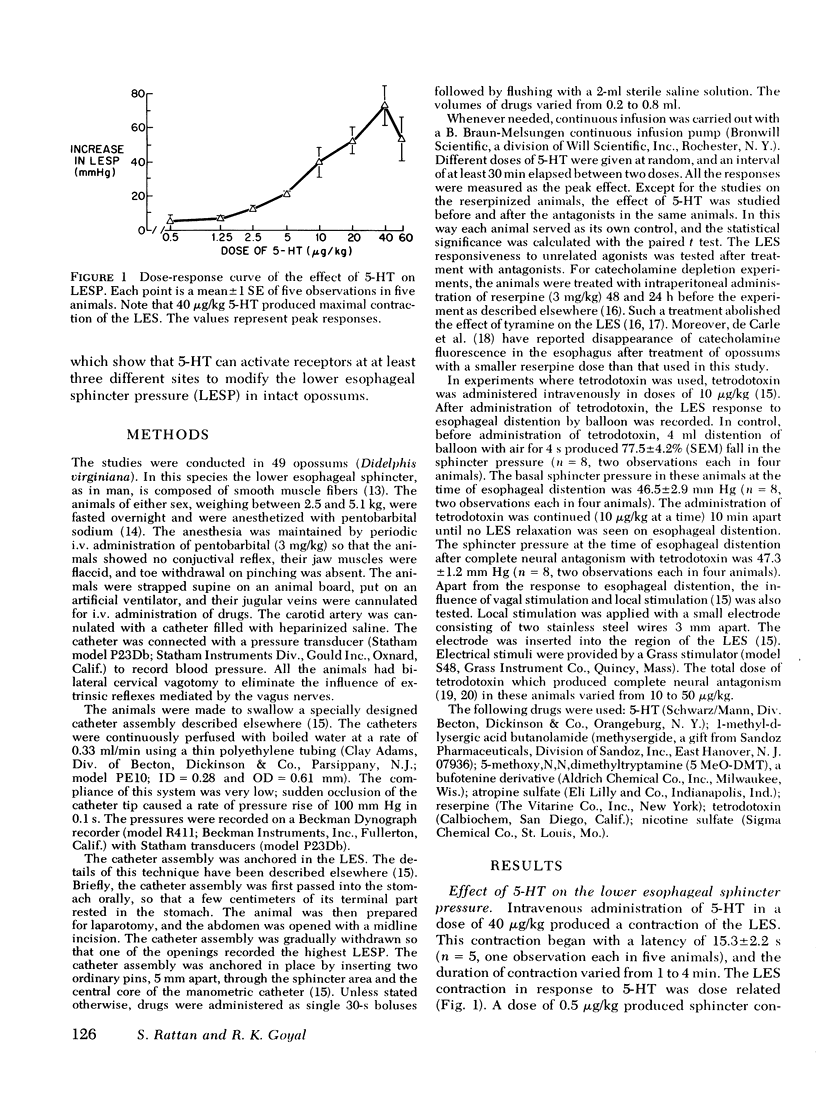
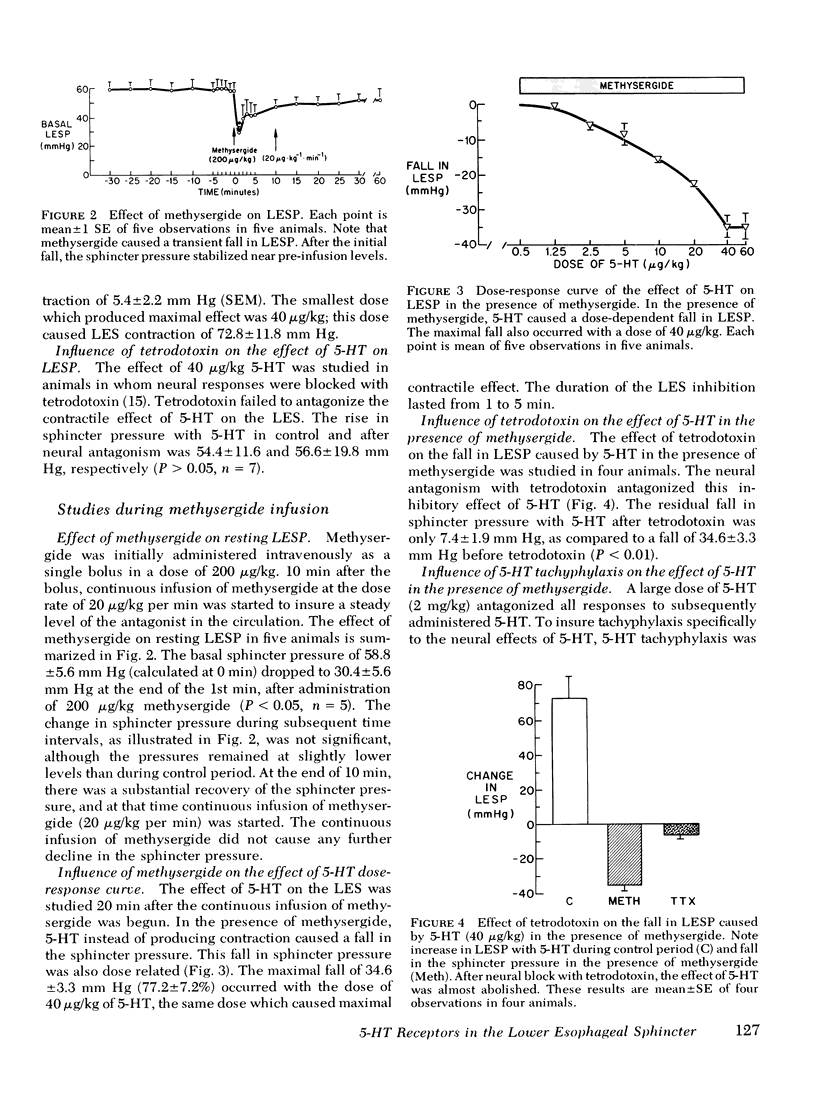
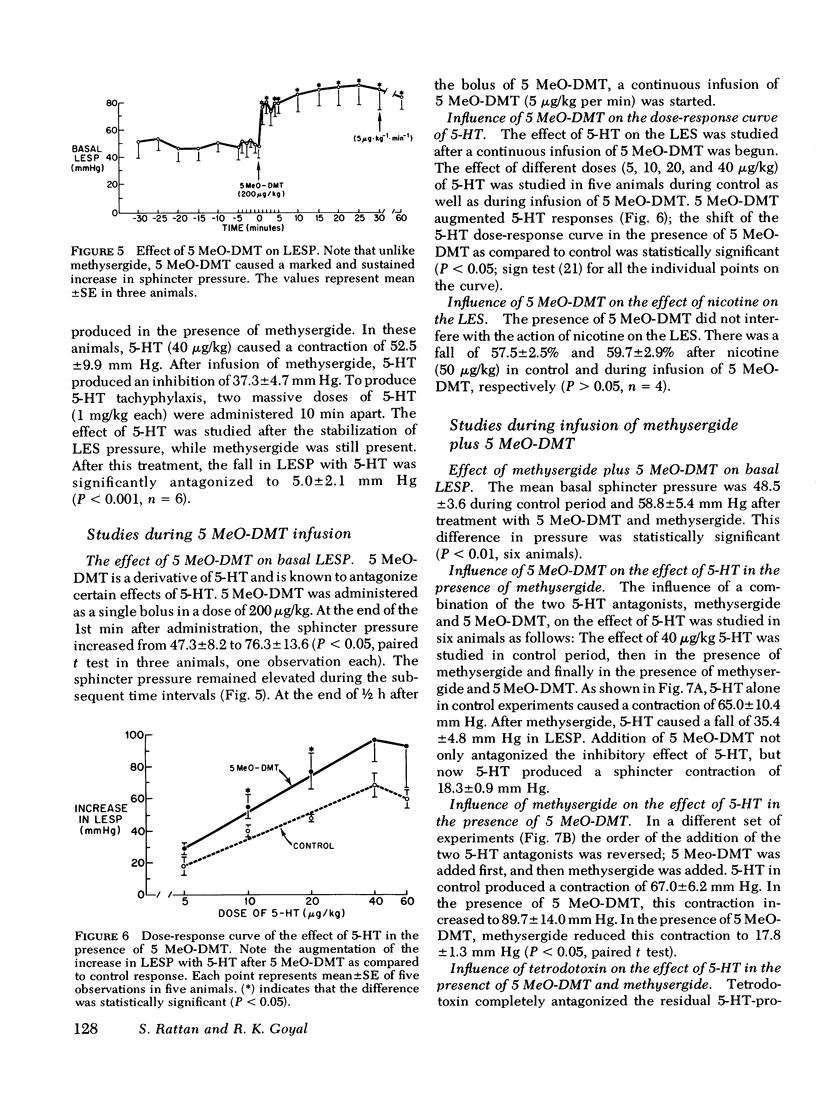
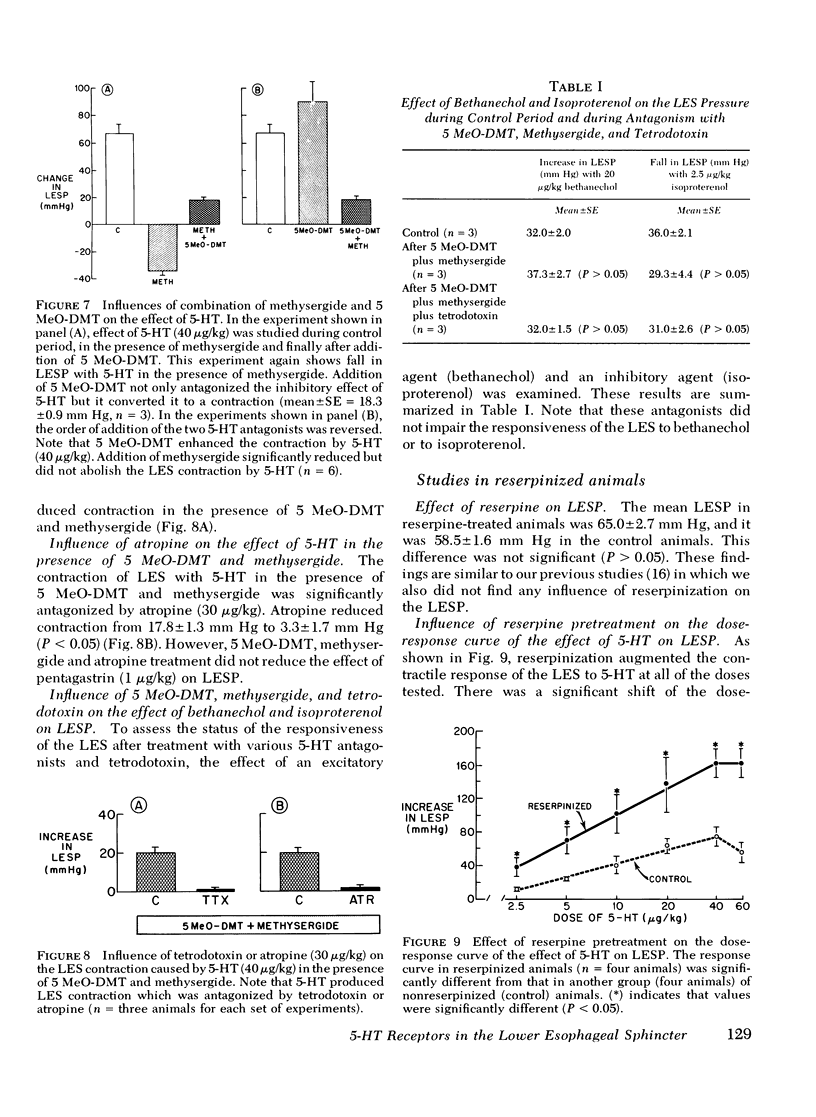
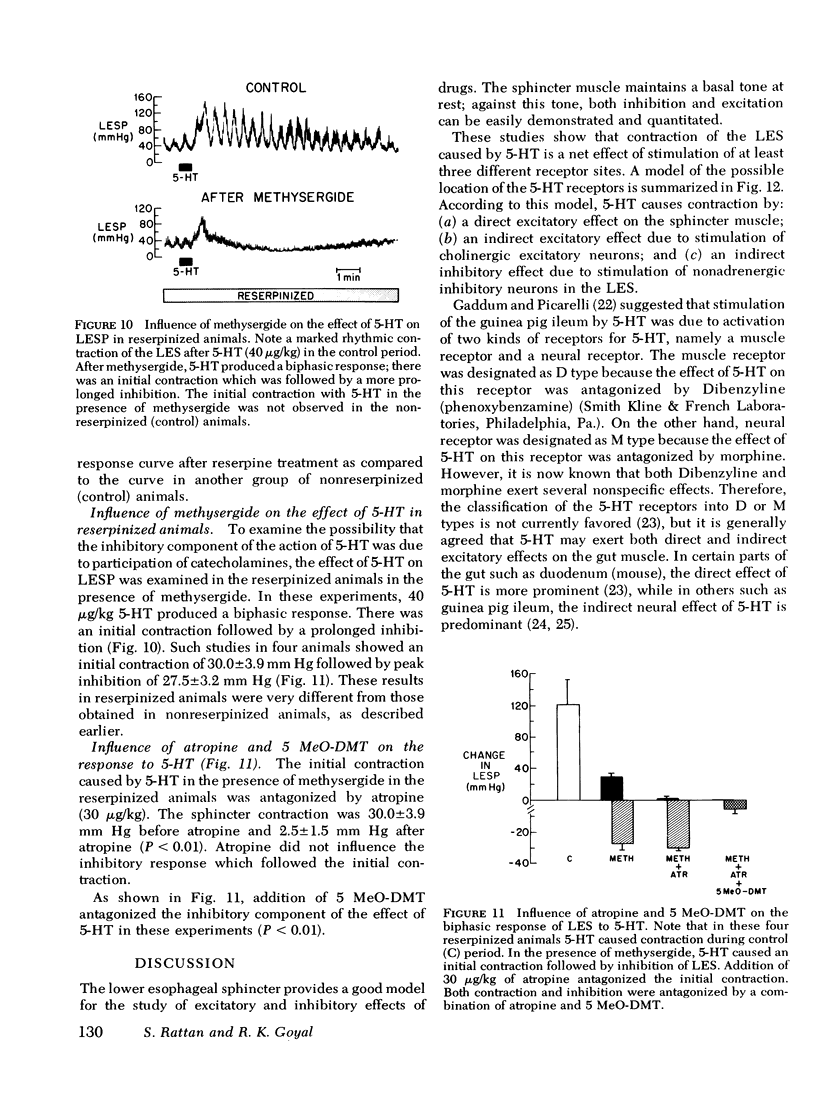
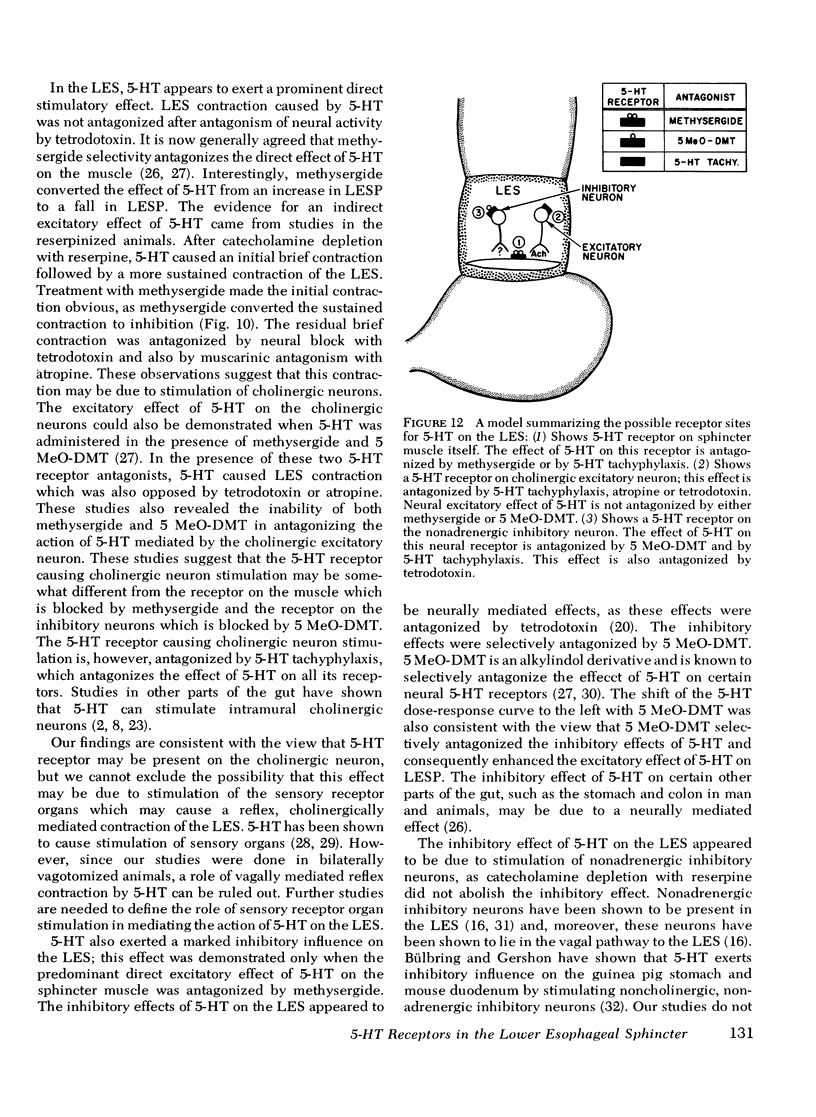
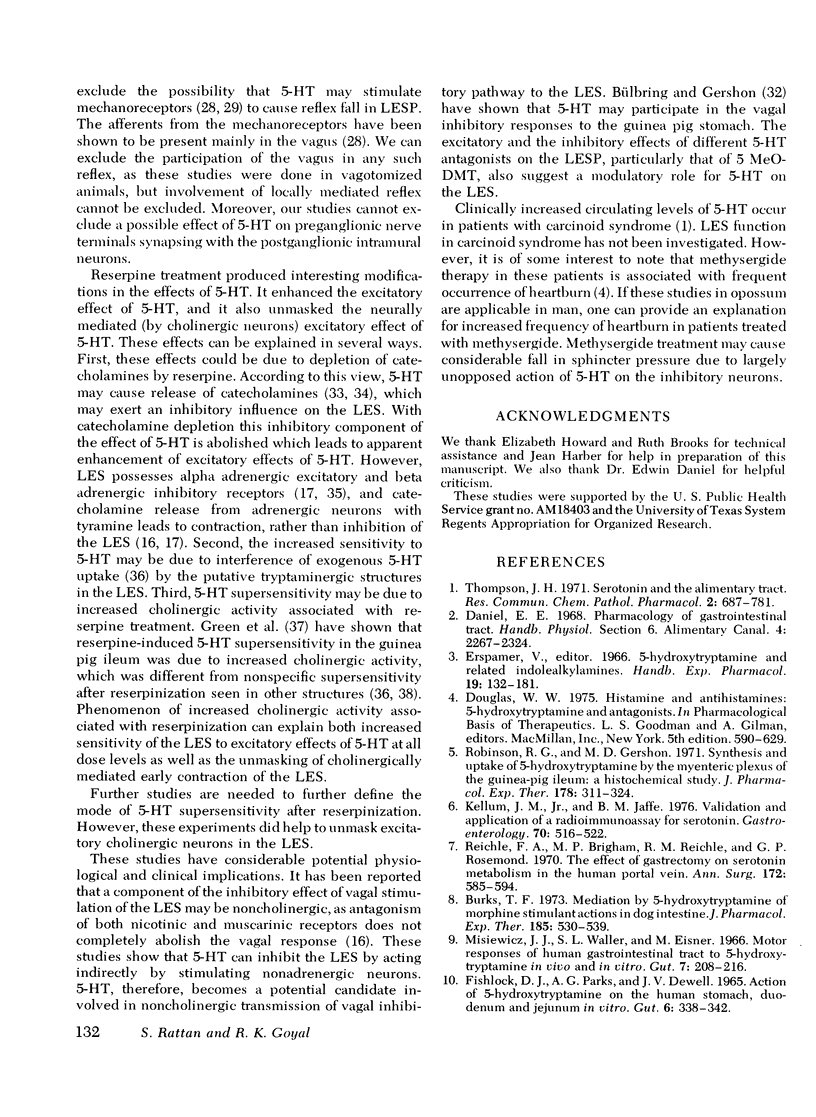
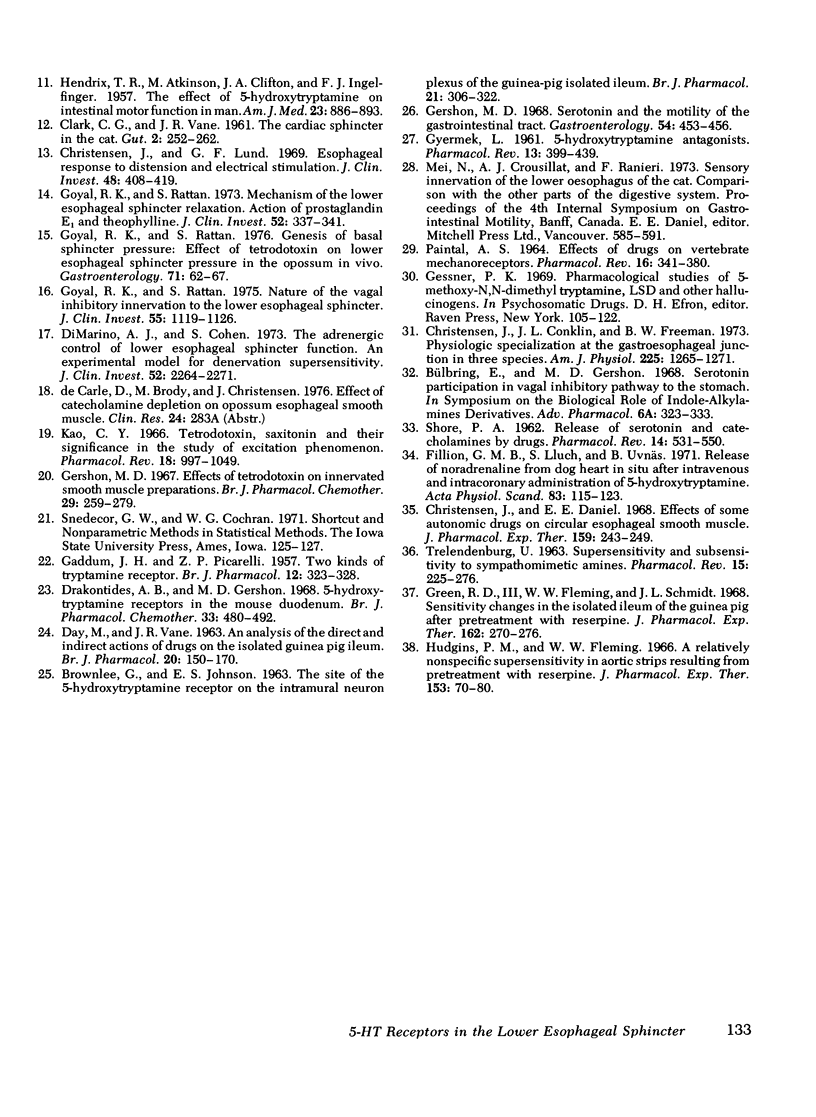
Selected References
These references are in PubMed. This may not be the complete list of references from this article.
- BROWNLEE G., JOHNSON E. S. THE SITE OF THE 5-HYDROXYTRYPTAMINE RECEPTOR ON THE INTRAMURAL NERVOUS PLEXUS OF THE GUINEA-PIG ISOLATED ILEUM. Br J Pharmacol Chemother. 1963 Oct;21:306–322. doi: 10.1111/j.1476-5381.1963.tb01529.x. [DOI] [PMC free article] [PubMed] [Google Scholar]
- Burks T. F. Mediation by 5-hydroxytryptamine of morphine stimulant actions in dog intestine. J Pharmacol Exp Ther. 1973 Jun;185(3):530–539. [PubMed] [Google Scholar]
- Bülbring E., Gershon M. D. Serotonin participation in the vagal inhibitory pathway to the stomach. Adv Pharmacol. 1968;6(Pt A):323–333. doi: 10.1016/s1054-3589(08)61188-6. [DOI] [PubMed] [Google Scholar]
- CLARK C. G., VANE J. R. The cardiac sphincter in the cat. Gut. 1961 Sep;2:252–262. doi: 10.1136/gut.2.3.252. [DOI] [PMC free article] [PubMed] [Google Scholar]
- Christensen J., Conklin J. L., Freeman B. W. Physiologic specialization at esophagogastric junction in three species. Am J Physiol. 1973 Dec;225(6):1265–1270. doi: 10.1152/ajplegacy.1973.225.6.1265. [DOI] [PubMed] [Google Scholar]
- Christensen J., Daniel E. E. Effects of some autonomic drugs on circular esophageal smooth muscle. J Pharmacol Exp Ther. 1968 Feb;159(2):243–249. [PubMed] [Google Scholar]
- Christensen J., Lund G. F. Esophageal responses to distension and electrical stimulation. J Clin Invest. 1969 Feb;48(2):408–419. doi: 10.1172/JCI105998. [DOI] [PMC free article] [PubMed] [Google Scholar]
- DAY M., VANE J. R. An analysis of the direct and indirect actions of drugs on the isolated guinea-pig ileum. Br J Pharmacol Chemother. 1963 Feb;20:150–170. doi: 10.1111/j.1476-5381.1963.tb01306.x. [DOI] [PMC free article] [PubMed] [Google Scholar]
- DiMarino A. J., Cohen S. The adrenergic control of lower esophageal sphincter function. An experimental model of denervation supersensitivity. J Clin Invest. 1973 Sep;52(9):2264–2271. doi: 10.1172/JCI107413. [DOI] [PMC free article] [PubMed] [Google Scholar]
- Drakontides A. B., Gershon M. D. 5-hydroxytryptamine receptors in the mouse duodenum. Br J Pharmacol Chemother. 1968 Jul;33(3):480–492. doi: 10.1111/j.1476-5381.1968.tb00496.x. [DOI] [PMC free article] [PubMed] [Google Scholar]
- Fillion G. M., Lluch S., Uvnäs B. Release of noradrenaline from the dog heart in situ after intravenous and intracoronary administration of 5-hydroxytryptamine. Acta Physiol Scand. 1971 Sep;83(1):115–123. doi: 10.1111/j.1748-1716.1971.tb05057.x. [DOI] [PubMed] [Google Scholar]
- Fishlock D. J., Parks A. G., Dewell J. V. Action of 5-hydroxytryptamine on the human stomach, duodenum, and jejunum in vitro. Gut. 1965 Aug;6(4):338–342. doi: 10.1136/gut.6.4.338. [DOI] [PMC free article] [PubMed] [Google Scholar]
- GADDUM J. H., PICARELLI Z. P. Two kinds of tryptamine receptor. Br J Pharmacol Chemother. 1957 Sep;12(3):323–328. doi: 10.1111/j.1476-5381.1957.tb00142.x. [DOI] [PMC free article] [PubMed] [Google Scholar]
- GYERMEK L. 5-hydroxytryptamine antagonists. Pharmacol Rev. 1961 Sep;13:399–439. [PubMed] [Google Scholar]
- Gershon M. D. Effects of tetrodotoxin on innervated smooth muscle preparations. Br J Pharmacol Chemother. 1967 Mar;29(3):259–279. doi: 10.1111/j.1476-5381.1967.tb01958.x. [DOI] [PMC free article] [PubMed] [Google Scholar]
- Gershon M. D. Serotonin and the motility of the gastrointestinal tract. Gastroenterology. 1968 Mar;54(3):453–456. [PubMed] [Google Scholar]
- Goyal R. K., Rattan S. Genesis of basal sphincter pressure: effect of tetrodotoxin on lower esophageal sphincter pressure in opossum in vivo. Gastroenterology. 1976 Jul;71(1):62–67. [PubMed] [Google Scholar]
- Goyal R. K., Rattan S. Mechanism of the lower esophageal sphincter relaxation. Action of prostaglandin E 1 and theophylline. J Clin Invest. 1973 Feb;52(2):337–341. doi: 10.1172/JCI107189. [DOI] [PMC free article] [PubMed] [Google Scholar]
- Goyal R. K., Rattan S. Nature of the vagal inhibitory innervation to the lower esophageal sphincter. J Clin Invest. 1975 May;55(5):1119–1126. doi: 10.1172/JCI108013. [DOI] [PMC free article] [PubMed] [Google Scholar]
- Green R. D., 3rd, Fleming W. W., Schmidt J. L. Sensitivity changes in the isolated ileum of the guinea pig after pretreatment with reserpine. J Pharmacol Exp Ther. 1968 Aug;162(2):270–276. [PubMed] [Google Scholar]
- HENDRIX T. R., ATKINSON M., CLIFTON J. A., INGELFINGER F. J. The effect of 5-hydroxytryptamine on intestinal motor function in man. Am J Med. 1957 Dec;23(6):886–893. doi: 10.1016/0002-9343(57)90298-x. [DOI] [PubMed] [Google Scholar]
- Hudgins P. M., Fleming W. W. A relatively nonspecific supersensitivity in aortic strips resulting from pretreatment with reserpine. J Pharmacol Exp Ther. 1966 Jul;153(1):70–80. [PubMed] [Google Scholar]
- Kao C. Y. Tetrodotoxin, saxitoxin and their significance in the study of excitation phenomena. Pharmacol Rev. 1966 Jun;18(2):997–1049. [PubMed] [Google Scholar]
- Kellum J. M., Jaffe B. M. Validation and application of a radioimmunoassay for serotonin. Gastroenterology. 1976 Apr;70(4):516–522. [PubMed] [Google Scholar]
- Misiewicz J. J., Waller S. L., Eisner M. Motor responses of human gastrointestinal tract to 5-hydroxytryptamine in vivo and in vitro. Gut. 1966 Jun;7(3):208–216. doi: 10.1136/gut.7.3.208. [DOI] [PMC free article] [PubMed] [Google Scholar]
- PAINTAL A. S. EFFECTS OF DRUGS ON VERTEBRATE MECHANORECEPTORS. Pharmacol Rev. 1964 Dec;16:341–380. [PubMed] [Google Scholar]
- Reichle F. A., Brigham M. P., Reichle R. M., Rosemond G. P. The effect of gastrectomy on serotonin metabolism in the human portal vein. Ann Surg. 1970 Oct;172(4):585–594. doi: 10.1097/00000658-197010000-00005. [DOI] [PMC free article] [PubMed] [Google Scholar]
- Robinson R. G., Gershon M. D. Synthesis and uptake of 5-hydroxytryptamine by the myenteric plexus of the guinea-pig ileum. A histochemical study. J Pharmacol Exp Ther. 1971 Aug;178(2):311–324. [PubMed] [Google Scholar]
- SHORE P. A. Release of serotonin and catecholamines by drugs. Pharmacol Rev. 1962 Dec;14:531–550. [PubMed] [Google Scholar]
- TRENDELENBURG U. Supersensitivity and subsensitivity to sympathomimetic amines. Pharmacol Rev. 1963 Jun;15:225–276. [PubMed] [Google Scholar]
- Thompson J. H. Serotonin and the alimentary tract. Res Commun Chem Pathol Pharmacol. 1971 Jul-Sep;2(4):687–781. [PubMed] [Google Scholar]


